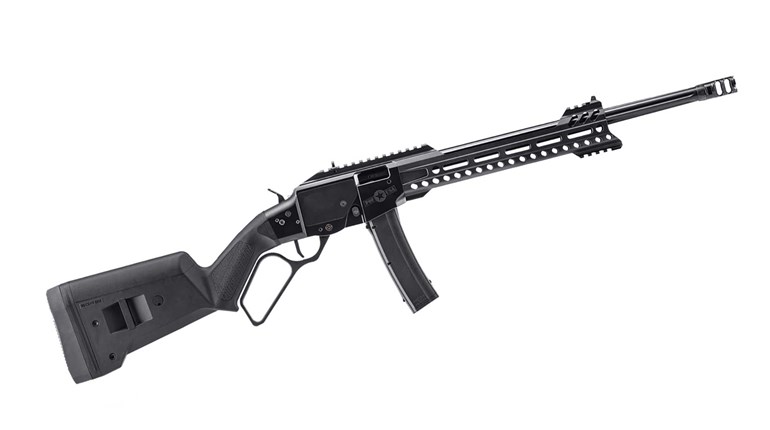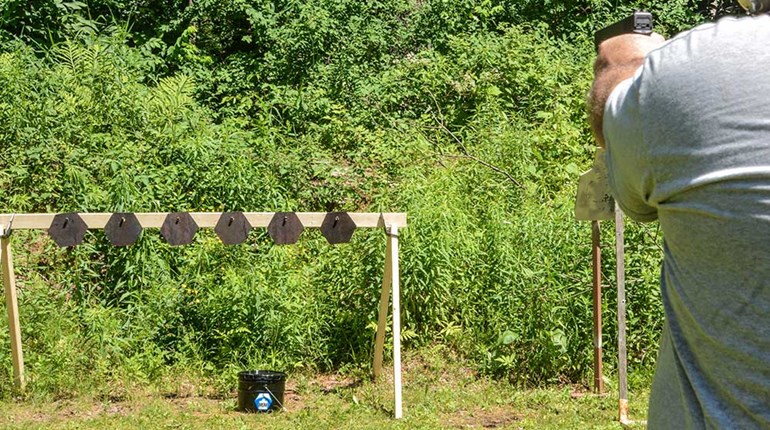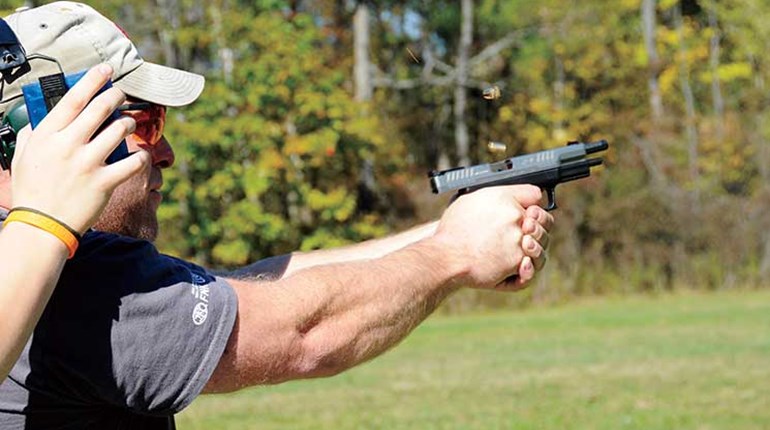
Why would a modern hunter carry a handgun? One reason is for a backup when you are separated from your long gun. More than one hunter has left his rifle in the tent, headed to the outhouse and then run into a bear. Or a handgun can serve as a primary gun when you are not carrying a long gun—when you are scouting, placing stands or retrieving downed game, for example. Also, if you are a bowhunter and it’s legal to carry a defensive handgun, you should.
Why? Well, in the summer of 2011 yet another hiker was killed by a grizzly. The black bears got a few, too. Wolves killed a woman in Alaska in 2010. Coyotes killed a woman in Canada in 2009 and mountain lions everywhere have developed a habit of snacking on people. I’ve been attacked twice by rabid animals. Then there are the human predators. Bottom line, it makes sense to be armed, and often a handgun is the best choice.
You can never go wrong with a revolver. They are rugged and reliable and are the only choice if you want seriously powerful cartridges. When in grizzly country I like a cartridge that starts with a “4,” as in .44 Mag., .454 Casull, etc. But for just about any other location I like a .357 Mag. Some will argue that a .357 is even good for grizzly country, particularly if you use ammo like Federal’s CastCore. I know one experienced Alaska guide who claims it’s easier to shoot than the big boomers and that a hit with a .357 is better than a miss with a .454. He has a point. I have a friend who was attacked by a grizzly and he killed it with a .357 Mag. He has a few scars, but is alive. Finally, when it comes to human predators the .357 Mag. has long held the reputation of being the best fighting cartridge in a revolver.
So which .357 Mag? The Rhino revolver from Chiappa (pronounced “kiapa”) is a good choice. This is the “upside down” revolver that you might have heard about. The gun actually fires from the bottom of the cylinder, rather than the top like a conventional revolver. While at first glance that looks like a gimmick, it actually provides some advantages. It keeps the line of recoil much lower in your hand, which makes it easier to manage. There is less muzzle flip, which lowers the perceived recoil. The amount of recoil force is the same, as physics never change, but the way the force feels to your hand is diminished. Also, the trigger is positioned farther forward than with a conventional double-action (DA) revolver, so you must be aware of where the thumb on your weak hand is positioned. If it creeps forward, you can be stung by the gasses escaping from the gap between the cylinder and the barrel. This I know for an absolute fact, and I doubt I’ll do it twice.
The Rhino has many innovative features and is truly a modern incarnation of the revolver design. The cylinder isn’t round but is milled into a hex shape so there are six flats. This reduces weight and the thickness of the cylinder, making the gun slimmer. The “hammer” is nothing more than a cocking piece—all the action parts are internal. You pull back the hammer to cock the gun for single-action (SA) fire, but it returns to the down position. When cocked, a red indicator protrudes from the top of the frame on the left side behind the rear sight. When you fire the gun DA the exposed “hammer” never moves.
The 3-pound, 8.5-ounce SA trigger has a two-stage feel that, once you learn to work it, leaves you with a very light pull at the end for precise shooting. The Rhino is quite accurate with a variety of ammo, so it is well suited for hunting game up to deer-size or for taking a grouse for supper.
The DA trigger pull is very smooth and very consistent at 11 pounds, 2 ounces, which is important for defense. I ran some range drills with two of the guns, the Model 40DS, 4-inch with fiber-optic sights and a 60DS, 6-inch barrel model with an Aimpoint Micro sight. I wanted to measure my splits (the time between shots) when shooting DA. With a 7-yard target, the splits for aimed fire averaged a consistent .25 second with both Rhino revolvers. This is the same average I have with a tuned, DA competition revolver.
The gun is opened with a lever high on the left side. It’s well positioned for a right-handed shooter, but we lefties will find it a bit awkward. The cylinder locks both front and back.
The 6-inch model I tested had a burr in one chamber that would not let me eject the empty case without using a cleaning rod to drive it out. I polished it off with a Dremel tool and it’s fine now. Also, the wood grip is a bit short by normal standards. I can fit my entire hand on it, but just barely (I do not have large hands). A bigger man might find it lacking. A larger grip is offered as an accessory.
The black-finished Rhino makes use of modern materials and manufacturing techniques to keep the weight low. The 4-inch model weighs only 1 pound, 14 ounces while the 6-inch, with the Aimpoint installed, weighs 2 pounds, 6 ounces. These are very light handguns, which makes them a joy to carry in a holster. Yet, because of the design, they don’t have the excessive felt recoil forces common with lightweight .357 Magnum handguns.
The 4-inch model has the optional adjustable, fiber-optic sights with contrasting colors front and back. I find these to be the best sights for the widest range of light conditions and target colors, and I am told they will be standard on all Rhino revolvers by the time this is in print. The 6-inch model has the standard black, adjustable sights. But it also has a rail on the top for mounting a scope or a sight like the Aimpoint Micro I chose. This red-dot sight is a good choice for those of us “seasoned” shooters who might have trouble seeing front sights. This model with its longer barrel can also serve as a primary handgun for hunting anything up to the size of a whitetail deer.
Both guns have rails on the bottom of the barrel. This will allow mounting accessories like a laser sight or a light, which means a Rhino can serve double duty as a home-defense gun as well.
Sam Colt may have introduced the world to the revolver, but this new Rhino takes the concept to the next level. I’ll admit I was a skeptic the first time I saw the gun. But now, after several months and many hundreds of rounds of ammo, I am a convert, a true believer. It may look funny, but beauty is only skin deep. This is a handgun I trust to get me back home.
Technical Specifications:
Type: double-action revolver
Caliber: .357 Mag.
Receiver: Ergal 7075-T651 HCS aluminum alloy
Barrel: 6"; button-rifled;1:18.75” RH twist
Magazine: 6-shot cylinder
Sights: adjustable fiber optics; optic rail
Trigger Pull: SA 3 lbs., 8.5 ozs.; DA 1 lb., 1 oz.
Grip: walnut
Overall Length: 11" (6” barrel)
Weight: 2 lbs., 1 oz. (6"); 1 lb., 14 ozs. (4")
MSRP: $926 (4"); $988 (6")


































